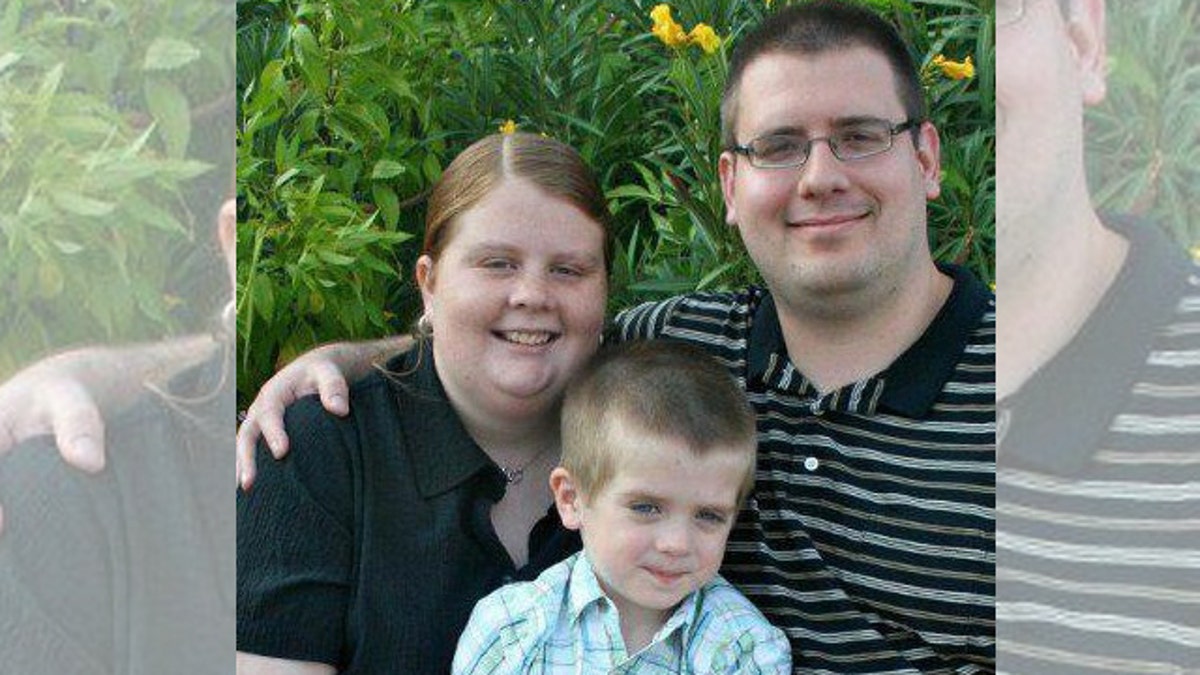
Naomi Lewkowski with her husband and son
Two to three times a day, Naomi Lewkowski, a 23-year-old stay-at-home mom, would have a seizure.
She’d pass out, part of her body might twitch or she’d have trouble breathing. Sometimes she’d injure herself on the fall and often she was rushed to the hospital. Her son, who was just a baby at the time, would sit there for the two to three minutes that his mom was unconscious.
Lewkowski tried several of the anti-seizure medications, but none of them helped, or the side effects were too extreme. So, Lewkowski and her husband hired an around-the-clock caregiver to help care for herself and their son.
But recently, Lewkowski learned about an epilepsy treatment that was like a pacemaker for the brain.
Called vagus nerve stimulation (VNS) therapy, the device is implanted in the chest and sends rhythmic impulses to the vagus nerve in the neck, which in turn sends impulses to the brain.
“Just like the heart has a beat, the brain has a beat,” said Dr. Blanca Vazquez-Santana, of the Comprehensive Epilepsy Center of New York University Langone Medical Center. “Epilepsy occurs when there are abnormal electrical discharges of the brain. VNS can get the beat back to normal."
Almost immediately after Lewkowski recovered from the surgery, her seizures diminished. Now she only has one or two seizures a month.
According to the Centers for Disease Control and Prevention, epilepsy affects 2.2 million Americans.
Although anti-epileptic drugs are very effective in reducing the frequency and intensity of seizures, these drugs don’t help about 30 percent of patients. The drugs also come with side effects that can greatly reduce quality of life in some people, such as extreme weight loss or gain, fatigue, double vision and irritability.
Another option is surgery to remove a part of the brain if there is a lesion causing the seizures, but only a small percentage of patients are candidates for surgery.
The VNS device is implanted under general anesthesia, and the procedure only takes about an hour.
The doctor adjusts the timing and amount of electrical stimulation via a remote device. The device has a magnet that the a patient wears, and when swiped over the site of the implant, can lessen a seizure or stop it in its tracks.
VNS is not 100 percent effective. Studies show about 40 percent will have a significant reduction in seizures. But these statistics come from studies that only allowed the most severe patients to take part.
“For all comers in a clinic, about 60 percent respond well,” Vazquez-Santana said. "Even on those, it helps only partially, many can reduce the amount of anti seizure drugs they take, and in turn reduce their side effects."
VNS can alter the sound of your voice, cause tickling in the throat, a cough and shortness of breath. These side effects typically occur when the device is stimulating the vagus nerve.
Still, Vasquez-Santana thinks it's worth pursuing.
“I think it’s greatly underused,” she said.
To learn more about VNS, speak to your doctor, or visit http://us.cyberonics.com/en/vns-therapy/.
